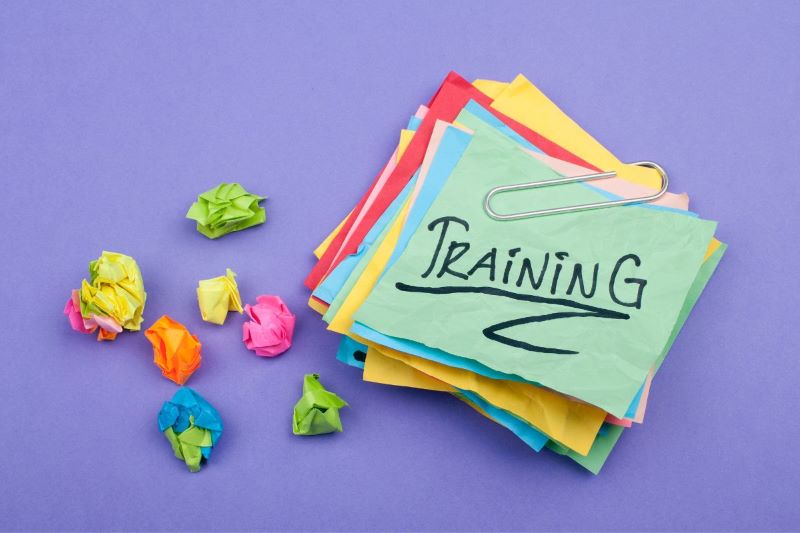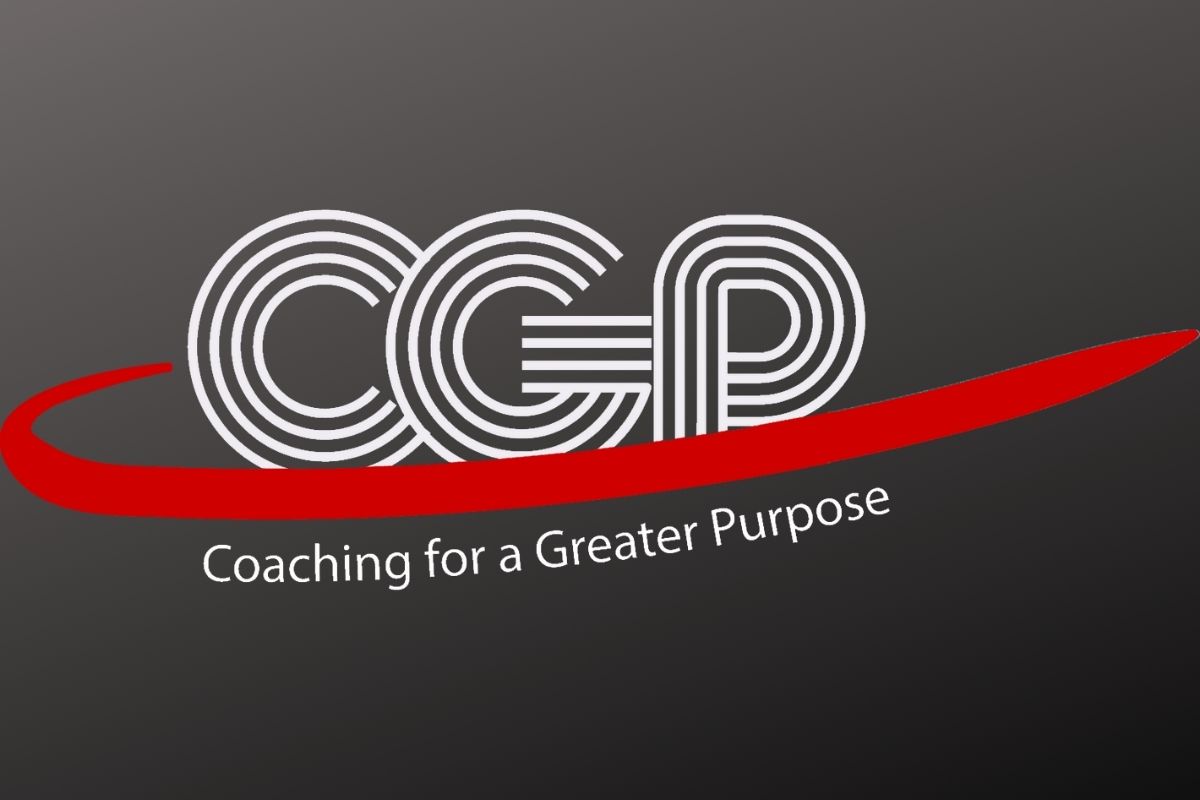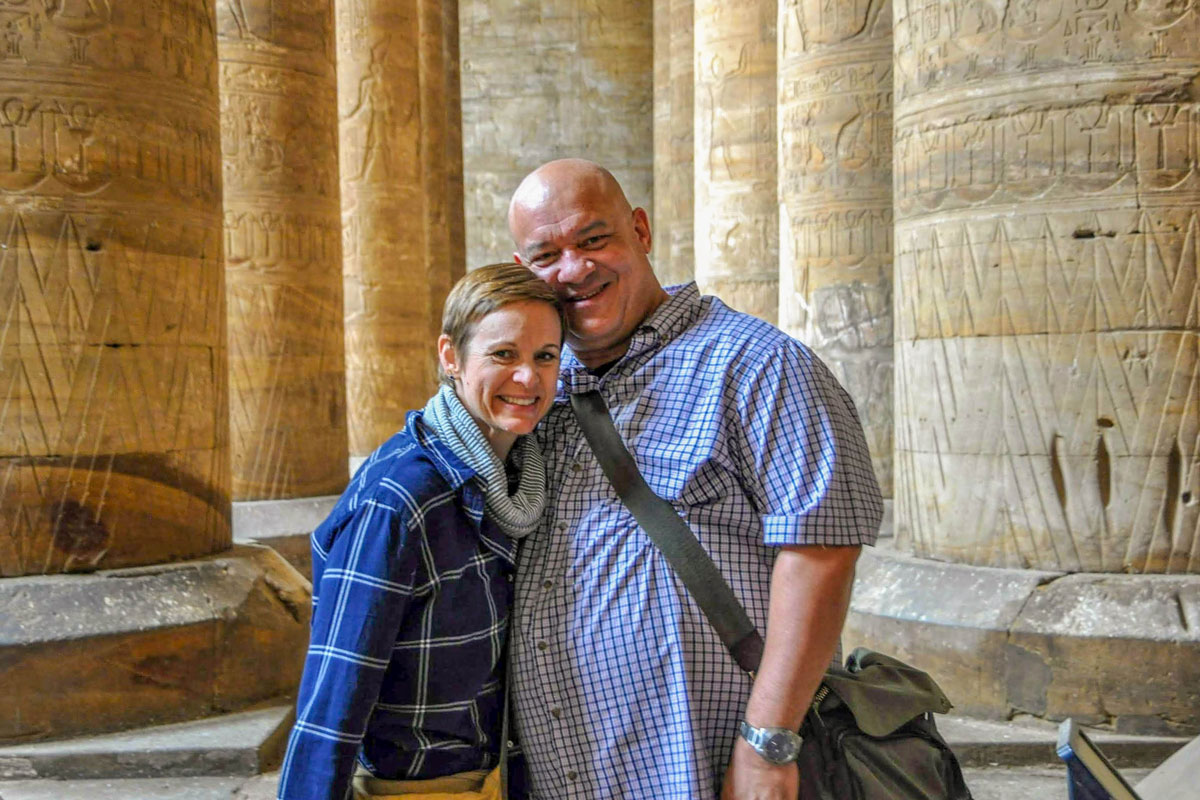Can Your School Afford NOT to Invest in Coaching?

As international schools globally enter recruitment season, retention of existing staff is a hot topic. Whilst there are positives to bringing ‘fresh eyes’ into an organisation periodically, one of the important ingredients that allows a school (and any organisation) to embed practice, make faster strategic progress, and develop and maintain a cohesive culture is: retention of its people. Poor retention ultimately prevents the achievement of an organisation’s longer term strategic goals. Coaching is one strategy that has the potential for demonstrable impact on retention. But for true impact, it can not be introduced as a token gesture.
In my role as a head of school and a leadership coach, I have frequently seen the power that coaching can have in supporting individuals and teams in personal and professional growth. Helping people to realise their own potential, build confidence and achieve personal goals are some of the most rewarding experiences as a leader; there is nothing better than seeing that ‘lightbulb’ moment when, through careful questioning and active listening , an individual comes to their own conclusion about the way to solve that challenge that had been on their mind for days.
Developing a systematic coaching model can allow schools to build on existing learning cultures and invest in staff as individuals. Coaching leads to a better understanding of individuals in organisations: their challenges, needs and capabilities. By developing this understanding and by making staff feel valued, school leaders can further create a culture of engagement, innovation and high performance, leading to the ability to respond with flexibility to challenges. A coaching culture can also help members of the organisation to feel a greater sense of agency leading to increased feelings of empowerment, job satisfaction and ultimately an increased feeling of belonging to the organisation.
Recently, I was coaching someone who is incredibly passionate about the power of coaching and keen to develop coaching within their own organisation. However, it became apparent through our conversations that the senior leaders within their school had not invested in a commitment to coaching at all: they had only paid lip service to it.
As with any whole organisational change or development, strong commitment from senior leaders is key. Sadly, in this particular organisation, the senior leaders did not add coaching to their strategic plans, gave no time (or very little time) to staff training or to the opportunity to develop a research-informed model that would serve the staff in the school.
If your school is thinking about investing in a whole school coaching model, here are 8 questions you should ask senior leaders before jumping in.
1. Is our school culture ready to support a coaching approach?

Values and culture are a vital consideration when developing a coaching programme. In the best organisations, values are placed at the heart of decision making, policy development and strategic planning. Regularly referring to values engenders an ethos and culture of trust, which happen to be essential prerequisites for a successful coaching model. A culture where social and emotional learning (SEL) and diversity, equity and inclusion (DEI) are valued and inclusive leadership is understood and expected is also a good foundation.
Placing learning at the heart of an organisation is a vital component of developing a coaching culture. Coaching is essentially a constant learning process and so having this as a foundation of the existing culture is an essential starting point.
Culture is led and created by the people in the organisation and one thing schools can do to support the development of the desired culture is to ensure that recruitment processes include questions and opportunities for leaders to explain the culture and ethos of the organisation. Including ‘values based’ questions which allow recruiters to assess candidates’ potential to align with the school’s values should lead to the appointment of individuals who subscribe to the established ethos.
2. How will coaching be linked to classroom practice?

‘Just tell me what to do!’ As a leader, I have heard this quite a few times over the years and granted, clear guidelines and parameters are important in the running of any organisation. But for long term, sustained improvement, telling employees what to do (also known as ‘command and control’ leadership) is not the answer. It’s quicker in the short term but prevents capacity building in the longer term by creating dependency on the leaders for permission. Research has shown that in today’s fast paced world, asking for permission slows down productivity, creativity, leads to a lack of commitment and importantly does not build capacity in our people.
It can also lead to disastrous decision making as demonstrated in L. David Marquet’s book, ‘Leadership is Language’ in the story he relates at the beginning of the book about ‘Losing El Faro’, a true story in which all members of a ship’s company lost their lives through a lack of distributed leadership capacity and a culture of needing to ask senior leaders for permission for every small decision. (Marquet, 2020).
In an article called, ‘The Leader as Coach (how to unleash innovation, energy and commitment)’ from the Harvard Business Review, Herminia Ibarra and Anne Scoular write, ‘Twenty-first-century managers simply don’t (and can’t!) have all the right answers. To cope with this new reality, companies are moving away from traditional command-and-control practices and toward something very different: a model in which managers give support and guidance rather than instructions, and employees learn how to adapt to constantly changing environments in ways that unleash fresh energy, innovation, and commitment. The role of the manager, in short, is becoming that of a coach.’ (Ibarra and Scoular, December 2019).
In many schools a focus on results, external inspections and other KPIs has led to continued elements of a ‘command and control’ culture. But building capacity in our people should be one of our main priorities as leaders if we want our organisation to thrive and compete in the 21st century.
When it comes to school improvement and our focus on what is best for our students, closely linked to coaching as a macro model for holistic people development is the sub-section of instructional coaching. Instructional or student-centred coaching is an evidence-based instructional coaching model that shifts the focus from ‘fixing’ teachers to collaborating with them to design instruction that targets student outcomes.
Tom Sherrington writes more about the preference for instructional coaching to traditional top-down lesson observations as the main tool for the continued development of school classroom learning culture in his article Time to replace ‘formal observation’ systems with instructional coaching for everyone (Sherrington, 2021)
3. How will coaching fit into our appraisal system?
In order to develop coaching as an authentic tool for personal development, it is vital to keep it separate from the school’s appraisal system. In many schools, appraisal or ‘performance management’ is still too often linked to arbitrary, isolated pieces of evidence such as one-off lesson observations and exam results for particular cohorts of students. If we are to effectively invest in teacher CPD and develop our teachers longer term then we need to invest in low stakes, on-going strategies with coaching as the vehicle to support development. In an article in the Chartered College’s Impact magazine, Steve Farndon writes, ‘A consideration for school leaders when introducing instructional coaching is how it can create a shift in school cultures around professional development. Where it is implemented well, a focus on on-going incremental improvement that is the joint responsibility of teacher and coach can build the kind of supportive environment that is shown to facilitate teacher improvement.’ (Farndon, 2021)
In my experience, the most effective system is one where staff are responsible for and given time to reflect on their own goals for the year with a mechanism for an ongoing dialogue with their line manager in connection to these goals. There is a heavy investment in professional learning by providing protected time every week when individuals can take part in a range of courses led by inhouse staff or external providers, or when they can focus on personal learning. This time is not the traditional weekly after school staff meetings, but takes place during a school day with the timetable having been carefully constructed to allow students to finish early so that staff can focus on their professional development. Ultimately, the students benefit from having teachers who are continuing to learn, reflect and develop as professionals.
By focusing coaching on specific goals for student learning, rather than on changing or fixing teachers, a coach can navigate directly towards a measurable impact and increased student achievement.
Goals are linked to the strategic priorities of the school and must ultimately impact on student learning. If the goals are not fully met there is no link to pay progression but the individual must demonstrate through on-going written reflection throughout the year that they have engaged with professional learning. In tandem with this, teachers are expected to engage in teacher learning communities with instructional coaching as the main vehicle for on-going reflection and improvement in classroom practice, using the following as evidence of impact:
- student voice (so essential, our students can tell us everything we need to know about their own learning if we ask the right questions, create the right environment for them to share and provided we listen!)
- written learning outcome evidence over time (progress in work books)
- formative, in class assessment for learning strategies including regular short retrieval practice -summative test data (a small piece of the jigsaw that comes with a big health warning!)
4. What are the essential skills and understandings our coaches will need to be effective?

Coaching guru and author of The Coaching Manual, Julie Starr writes: ‘‘An effective coach facilitates discussions that increase an individuals’ awareness, insight and available choice in a situation.” (Starr, 2016, p. 10)
Building rapport and relationship
Many organisations who routinely use coaching start with chemistry sessions where coaches and coachees are matched. This often includes a conversation about why the coachee wants to be coached, what they feel they could gain from coaching and what their previous experience of coaching has been. The coach could also explain their style of coaching. It is important for the coaching relationship to begin positively with a basis of trust and building rapport is at the centre of this.
Active Listening
The biggest single barrier that I come across in all areas of my leadership role is a lack of understanding about this. Active listening includes re-phrasing, summarising and reflecting back to a person what they have said. It also includes being mindful of your body language and other non-verbal cues.
Asking powerful questions
One powerful question can invite a coachee to reflect and open up about an issue on a deep level that can lead to powerful insights and a conviction to take action.
Emotional Intelligence
Coaches must have a high emotional quotient. ‘Emotional intelligence is the ability to relate to others from a paradigm of trust,’ writes John Whitmore (Whitmore, 2017, p40). The skill of using emotional intelligence is at the heart of effective coaching relationships. This skill allows a coach to build rapport with the coachee; listen to the coachee without judgement (vital if a coachee is going to be totally honest about their situation or issues) and treat the coachee as an equal. It is only by employing highly developed skills of emotional intelligence that one individual can truly relate to others.
Keeping Opinions (and advice) to yourself
Displaying impartiality is a vital behaviour in an effective coach. A coach must keep personal opinions and biases to themselves so that coachees can find their own insights and awareness. As a coach your role is not to judge or disapprove of the way your coachee behaves or how they live their life. Candice Frankovelgia wrote, “As partners in learning, coaches listen carefully, are open to the perspectives of others and allow employees to vent emotions without judgement.” (Frankovelgia, 2010).
Confidentiality
In order to be effective, a coach also needs to be able to have knowledge of and effectively create confidentiality. If a coachee is worried that information may be passed on then the coaching relationship will not be effective. It is the responsibility of the coach to state clearly what confidentiality will look like and what their commitments are to report to leaders so that the coaching relationship can proceed with trust. This is an important element of ‘contracting’ which should take place at the beginning of the coaching relationship and be revisited regularly throughout.
Contracting
The responsibility of the coach is to ensure that expectations and boundaries of the working partnership with the coachee are established at the outset. This is particularly important if the coach is also a senior leader responsible for the performance evaluation of the coachee or if the coach has been engaged by the leadership of an organisation who is expecting certain results and feedback about the coachee. It is important that a coach adheres to a code of ethics such as the Global Code of Ethics (Global Code of Ethics for Coaches, Mentors and Supervisors, 2021) and uses this as a guide for relationships between coach and coachee.
Establishing boundaries is essential if the working partnership is to be effective and fulfil its purpose for the coachee. Whitmore writes about conscious working agreements, “Partnership and collaboration in a working relationship require a strong foundation built on clear expectations and agreement by conscious creation, not by default.” (Whitmore, 2017, p. 63).
The coaching relationship is a partnership and it is the responsibility of the coach to set boundaries, and use the information given by the coachee to lead them towards their goals. The coach is also responsible for regularly reviewing the coaching journey, suggesting possible opportunities for re-contracting, changing goals or direction.
5. How will we train and support our coaches?

If a school wants coaching to be developed as a consistent model of practice for all, then there should be a plan for initial and ongoing training.
In addition, in order to support coaches, arrangements for regular supervision with more experienced coaches should be made. Supervision allows for reflection. Reflective practice is the act of thinking about an experience that has taken place and asking critical questions in order to assess
Supervision also has the following benefits and purposes:
- Supporting the well being of the coach; giving them an opportunity to talk through challenges they have experienced
- Developing the effective practice of the coach; supporting them to reflect; asking guiding questions or sharing experiences
- Acting as a sounding board for any questions around ethics of particular situations or conversations
- Holding the coach to account for meeting standards and expectations of best coaching practice and a code of ethics
6. Will coaching be optional?
This is a great and essential question. I know of many schools where coaching has been introduced and it has not been optional. Staff have been told they are ‘being coached’ at the same time every so many weeks whether they like it or not! However, if you take some of the information above, particularly the point about ‘building rapport and relationship’ it is vitally important that a coachee wants to be coached and has bought into the process. Otherwise, it is likely a lot of time will be wasted and ultimately the credibility of the coaching culture will not be established.
7. How will we know if coaching is having an impact?
Like it or not, schools are businesses and it is vital to demonstrate impact and ROI (Returns On Investment) for any organisation. Having an already established culture of self evaluation is helpful here. Introducing a coaching model can support the development of a consistently self aware, self improving, responsive and flexible organisation which will thrive in the areas of recruitment and retention, creating high performing teams and making it the employer of choice in their field. This will in turn, positively impact the experience of students in our schools by attracting, retaining and continuing to develop the individuals in those teams.
Self evaluation
To assess the impact of coaching on individuals and organisations, it is important to evaluate where the culture of the organisation is, where it wants to be and how it will know when it gets there. Any measure of culture needs to be conducted in a systematic way with agreed understanding of what is being measured and why. This could be gauged through a self evaluation such as the rubric used in ‘The Performance Curve: four stages of organisational development.” (The Performance Curve, 2017) where the aim is to move towards an interdependent culture where individuals fulfill their individual potential.
In addition to measuring culture, it is important to be able to measure the impact on the organisation of the investment in a whole organisational coaching programme in order to establish credibility in the coaching programme.
Return on Investment (ROI)
Whitmore describes the Coaching for PerformanceROI (returns on investment) evaluation methodology which is structured through creating a set of goals, ongoing actions and uses reflective notes to gauge progress towards the goals. The methodology explains how the impact of coaching can be measured both quantitatively and qualitatively, finishing with a formula to calculate financial gain (ROI) provided by the implementation of a coaching model.
This methodology could be used by leaders to measure the impact of coaching on the school as a whole, combined with regular self evaluation exercises such as the Performance Curve survey and annual employee satisfaction and engagement surveys.
Other mechanisms for organisations to measure the impact of coaching could include staff retention and KPIs such as net promoter measures from annual staff surveys. The promotion of individual staff and the achievement of annual goals could also be used as a measure of the impact of coaching.
8. What time commitment will be given to coaching?
This is a simple one but one that is so often over-looked in our busy school! It is easy for a senior leader to say yes to many things without really making a commitment to support the project with the relevant resources and the biggest of these is often: time. But to build long term capacity and skill levels in coaches, schools must invest time in building a coaching culture, time for training, time for coaching to take place effectively and time for coaches to be supported.
If your school is considering launching a whole school coaching programme, reflecting on the above questions with your leadership team is a good place to start. Build your model slowly, invest in training for your coaches and make sure you have procedures in place to reflect, evaluate and measure the impact of coaching. If it is developed with credibility, a coaching programme could be one of the best long term investments your school ever makes.
This article is available and can be accessed in Spanish here.
Anderson, C. (2013) ‘Re-contracting with your coaching client’. https://carlyanderson.com/recontracting-with-your-coaching-client [Accessed 12 April 2022].
Ashley-Timms, L. (no date) ‘5 Reasons Why Coaching Supervision is Vitally Important’. https://www.businesscoaching.co.uk/news/blog/5-reasons-why-coaching-supervision-is-vitally-important [Accessed 9 April 2022].
Bechini, N. (2017) ‘10 Easy Steps for proving the ‘Value’ of Coaching’. https://coachingfederation.org/blog/10-easy-steps-for-proving-the-value-of-coaching [Accessed 6 April 2022].
Burton, D., Raedeke, T. (no date) ‘Good communication skills are key to successful coaching’. https://us.humankinetics.com/blogs/excerpt/good-communication-skills-are-key-to-successful-coaching [Accessed 8 April 2022].
Choice The Magazine of Professional Coaching. (2020) ‘What is This Thing Called Coaching? Taking a look back’. https://choice-online.com/what-is-this-thing-called-coaching-taking-a-look-back/ [Accessed 15 April 2022].
Coaching Team, U. (2020) ‘Five Benefits of Reflective Practice’. https://www.ukcoaching.org/resources/topics/diagram-infographic/five-benefits-of-reflective-practice [Accessed 12 April 2022].
Dewey, J. (2012) ‘How we think’. Eastford: Martino Publishing.
Frankovelgia, C. (2010) ‘The Key to Effective Coaching’. https://www.forbes.com/2010/04/28/coaching-talent-development-leadership-managing-ccl.html?sh=5bf9c76838e0 [Accessed 3 April 2022].
Van Ameyde, H. (2020) ‘Research Paper: Importance of Reflective Learning and Practice’. https://coachcampus.com/coach-portfolios/research-papers/helen-van-ameyde-importance-of-reflective-learning-and-practice/ [Accessed 7 April 2022].
Farden, S (2021) ‘ Implementing Instructional Coaching A Guide for School Leaders.’ https://my.chartered.college/impact_article/implementing-instructional-coaching-a-guide-for-school-leaders/ (Accessed November 2022).
Fuller, T. (2021) ‘Building Your Reflection Practice: Self-Coaching Questions for Coaches’. https://instituteofcoaching.org/blogs/building-your-reflection-practice-self-coaching-questions-coaches [Accessed 5 April 2022].
Gallwey, W. (1974) The Inner Game of Tennis. New York: Random House. Global Code of Ethics for Coaches, Mentors and Supervisors (2021) https://www.globalcodeofethics.org/ [Accessed 20 April 2022].
Hullinger, A., DiGirolamo, J., TKach, J. (2019) ‘Reflective Practice for Coaches and Clients: An Integrated Model for Learning’. https://researchportal.coachfederation.org/Document/Pdf/abstract_3481 [Accessed 5 April 2022].
Ibarra, H., Scoular, A (2019) ‘The Leader as Coach. How to unleash innovation, energy and commitment.’ https://hbr.org/2019/11/the-leader-as-coach (Accessed October 2022).
Jones, G. (2018) ‘What is reflective practice?’ https://spielverlagerung.com/2018/03/07/what-is-reflective-practice/ [Accessed 18 April 2022].
Marquet, L.D. (2020) Leadership is Language. The Hidden Power of What You say and What You Don’t. New York. Penguin Random House.
Norman, C. (no date) ‘Leader as Coach: Establishing the Coaching Agreement/Contracting’. https://www.clarenormancoachingassociates.com/leader-coach-establishing-coaching-agreement/ [Accessed 15 April 2022].
Performance Consultants. (2017) ‘ The Performance Curve: four stages of organisational development’. https://www.performanceconsultants.com/the-performance-curve [Accessed 9 April 2022].
Sherrington, T. (2021) ‘Time to replace ‘formal observation’ systems with Instructional Coaching for everyone’. https://teacherhead.com/2021/01/28/time-to-replace-formal-observation-systems-with-instructional-coaching-for-everyone-cpd/ [Accessed 15 April 2022].
Starr, J., (2016) The Coaching Manual. Harlow: Pearson Education Ltd. Starr, J. (2014) The Mentoring Manual. Harlow: Pearson Education Ltd.
Welch, P. (2019) ‘What is Reflective Practice?’ https://www.associationofcoachingsupervisors.com/community/articles/47/what-is-reflective-practice [Accessed 10 April 2022].
Whitmore, J. (2017) Coaching for Performance. Great Britain: John Murray Press.









